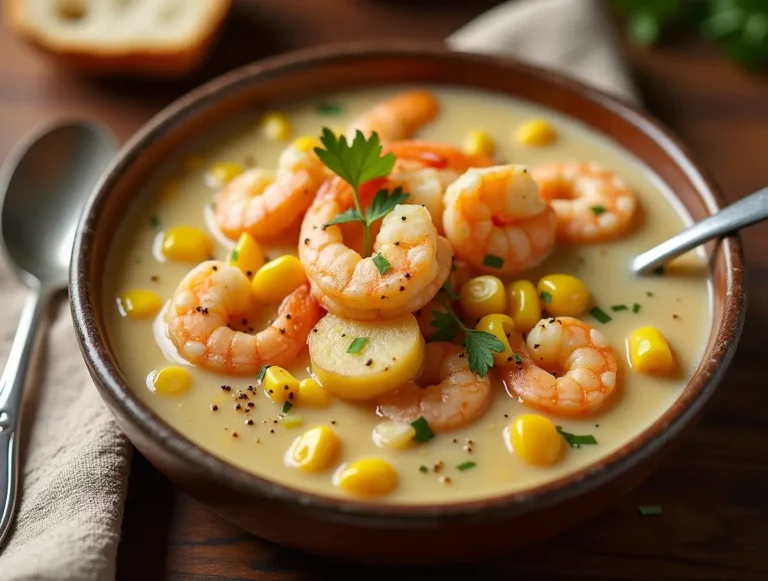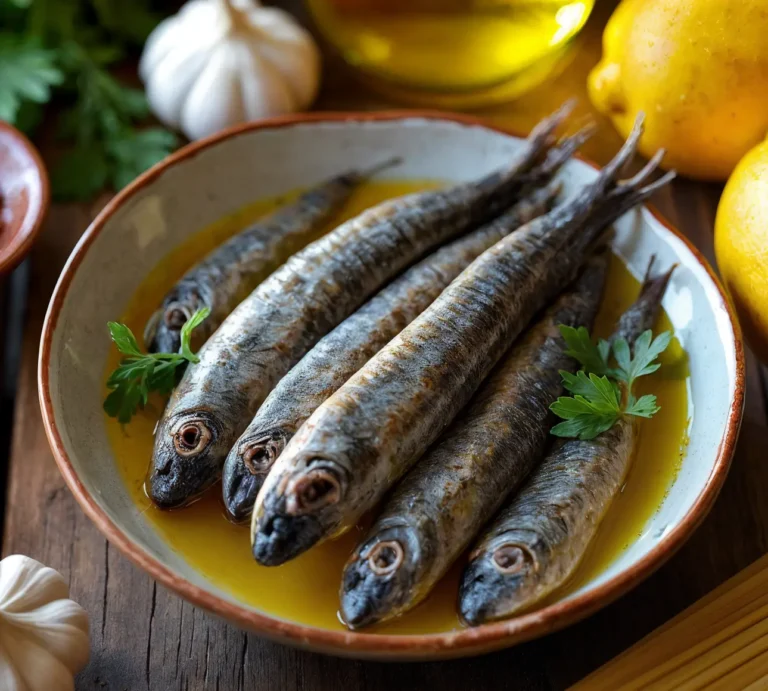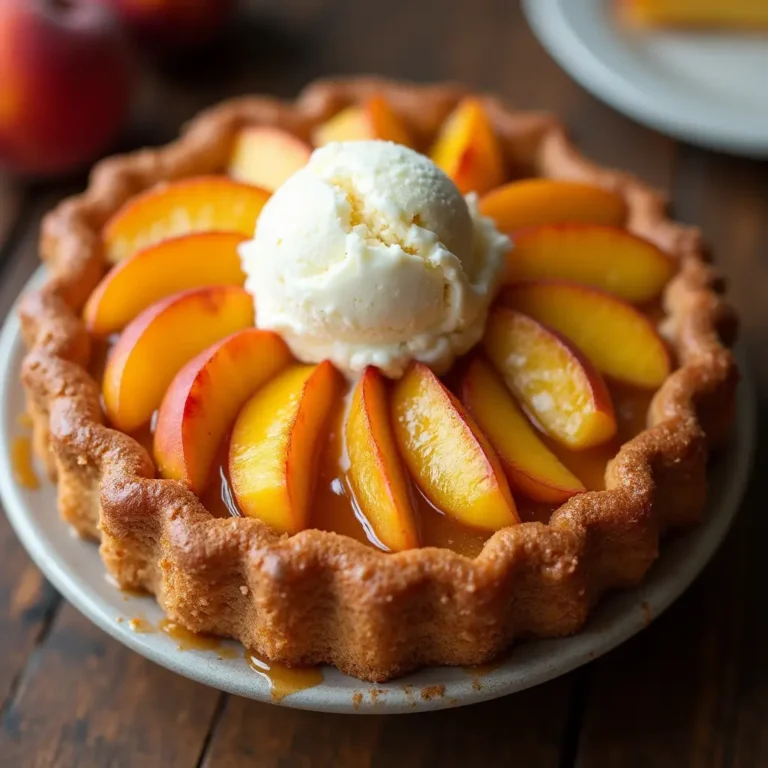Healthy Yellowfin Tuna Recipe with Quinoa & Veggies
Introduction
Tired of rubbery, overcooked tuna that tastes more like cardboard than the premium fish you paid for? Many home cooks struggle with preparing yellowfin tuna, often overcooking this delicate fish until it loses all its natural flavor and silky texture. This yellowfin tuna recipe will deliver perfectly seared, restaurant-quality tuna with a beautiful pink center, paired with fluffy quinoa and vibrant vegetables for a complete, nutritious meal that’s both elegant and satisfying. As a seafood chef who has worked in coastal restaurants for over 12 years, I’ve perfected the technique for cooking yellowfin tuna to showcase its natural buttery texture and clean ocean flavor without masking it with heavy sauces. In this guide, you’ll discover expert tips for selecting the highest quality yellowfin tuna, the secret to achieving that perfect sear while maintaining a tender interior, foolproof quinoa cooking methods, and creative vegetable combinations that complement rather than compete with the tuna’s delicate flavor profile.
Why This Yellowfin Tuna Recipe Works
- Uses sushi-grade yellowfin tuna that’s readily available at quality seafood counters
- Requires only 10 minutes of hands-on cooking time for the complete meal
- Perfect for both impressive dinner parties and healthy weeknight dinners
- Delivers restaurant-quality results with simple home cooking techniques
- Provides a complete protein and complex carbs in one balanced dish
- Features vibrant colors and textures that make every plate Instagram-worthy
- Offers exceptional nutritional value with omega-3s, complete proteins, and fiber-rich quinoa
Choosing the Right Yellowfin Tuna
Best Cuts for This Recipe
For this yellowfin tuna recipe, thick center-cut steaks work best, ideally 1 to 1.5 inches thick. These substantial portions allow you to achieve a perfect sear on the outside while maintaining that coveted rare to medium-rare center. Yellowfin tuna’s firm, meaty texture makes it ideal for searing, as it holds its shape beautifully and develops an appealing crust without falling apart. Look specifically for #1 grade yellowfin, which indicates the highest quality with deep red color and minimal marbling. Avoid thin medallions or end pieces, as these cook too quickly and make it nearly impossible to achieve the proper doneness gradient.
Buying Tips
When selecting yellowfin tuna, look for deep, vibrant red flesh with a slight translucency. The color should be consistent throughout without any brown spots or discoloration. Fresh yellowfin tuna should smell like clean ocean water, never fishy or ammonia-like. Ask your fishmonger when the tuna arrived and aim to cook it within 24 hours of purchase for optimal flavor and texture. If you’re buying from a grocery store, check that the tuna is stored on plenty of ice and that the display case is properly refrigerated. Don’t hesitate to ask to smell the fish before purchasing—any reputable seller will accommodate this request.
Substitutions
If yellowfin tuna isn’t available, bigeye tuna (also called ahi) makes an excellent substitute with similar texture and flavor characteristics. Albacore tuna can work but tends to be slightly lighter in color and milder in flavor. For a more budget-friendly option, skipjack tuna steaks can substitute, though they have a stronger flavor and slightly firmer texture. If you prefer a different fish entirely, thick swordfish or mahi-mahi steaks can be prepared using the same searing technique, though cooking times may need slight adjustment.

Ingredients & Prep
Tuna Prep Essentials
For the Yellowfin Tuna (serves 4):
- 4 yellowfin tuna steaks, 6 oz each, 1-1.5 inches thick
- 2 tablespoons high-heat oil (avocado or grapeseed)
- 1 teaspoon coarse sea salt
- ½ teaspoon freshly ground black pepper
- 1 tablespoon sesame seeds (optional, for coating)
Remove tuna from refrigeration 15-20 minutes before cooking to take the chill off. Pat each steak completely dry with paper towels—this step is crucial for achieving a proper sear. Trim any dark red bloodline if present, as this can have a stronger, more metallic flavor. For even cooking, ensure all steaks are roughly the same thickness. If you have steaks of varying thickness, gently pound the thicker portions with a meat mallet to create uniformity.
Quinoa and Vegetable Components
For the Quinoa Base:
- 1 cup tri-color quinoa
- 2 cups low-sodium vegetable or chicken broth
- 1 tablespoon olive oil
- ½ teaspoon salt
For the Roasted Vegetables:
- 1 medium zucchini, diced
- 1 red bell pepper, diced
- 1 cup cherry tomatoes, halved
- ½ red onion, thinly sliced
- 2 tablespoons olive oil
- 1 teaspoon dried herbs (thyme or oregano)
- Salt and pepper to taste
Rinse quinoa thoroughly in a fine-mesh strainer until water runs clear to remove the natural saponin coating that can create bitterness. For the vegetables, cut everything into similarly sized pieces to ensure even cooking. The key is to prep all vegetables before you start cooking, as this recipe moves quickly once you begin.
Pantry Staples and Finishing Touches
- Fresh lemon or lime for brightness
- Extra virgin olive oil for drizzling
- Fresh herbs like cilantro, parsley, or microgreens
- Soy sauce or tamari for umami depth
- Rice vinegar for acidity
- Sesame oil for aromatic finishing
These pantry staples allow you to customize the flavor profile of your yellowfin tuna recipe to suit your preferences or dietary needs.
Step-by-Step Cooking Instructions
Pre-Cooking Prep
- Preheat your oven to 425°F for the vegetables.
- Start the quinoa: Combine rinsed quinoa with broth in a medium saucepan, bring to a boil, then reduce heat to low, cover, and simmer for 15 minutes.
- While quinoa cooks, toss prepared vegetables with olive oil, herbs, salt, and pepper on a large baking sheet.
- Place vegetables in oven and roast for 20-25 minutes until tender and lightly caramelized.
- Pat tuna steaks dry again and season both sides with salt and pepper just before cooking.
Cooking the Yellowfin Tuna
- Heat a cast-iron or heavy-bottomed stainless steel pan over high heat until it begins to smoke slightly.
- Add oil to the pan and swirl to coat the bottom evenly.
- Gently place tuna steaks in the pan, ensuring they don’t touch each other to prevent steaming.
- Sear for 1-2 minutes without moving the fish, allowing a golden crust to form.
- Flip the steaks and sear the second side for another 1-2 minutes for rare doneness.
- For medium-rare, extend cooking time to 2-3 minutes per side.
- Remove tuna from heat immediately and let rest for 2 minutes.

Assembling the Complete Dish
- Fluff the cooked quinoa with a fork and stir in a drizzle of olive oil.
- Remove roasted vegetables from oven and check for doneness—they should be tender but not mushy.
- Divide quinoa among four serving plates or bowls.
- Top with roasted vegetables, arranging them attractively around the quinoa.
- Slice tuna steaks against the grain into ½-inch thick pieces, revealing the beautiful pink interior.
- Fan tuna slices over the quinoa and vegetables.
Doneness Check
For perfect yellowfin tuna, aim for these internal temperatures:
- Rare: 115-120°F (cool red center)
- Medium-rare: 125-130°F (warm pink center)
- Medium: 135°F (light pink throughout)
Most sushi-grade yellowfin tuna is best enjoyed rare to medium-rare to preserve its buttery texture and clean flavor. Use an instant-read thermometer inserted horizontally into the thickest part of the steak for accuracy. The fish should feel firm but still give slightly when pressed with your finger.
Resting
Allow seared tuna to rest for 2-3 minutes after cooking to let the heat distribute evenly throughout the fish. This brief rest prevents the juices from running when you slice the tuna and ensures each piece maintains its beautiful appearance on the plate. Unlike red meat, tuna doesn’t require extended resting time due to its different protein structure.
Pro Tips for Perfect Yellowfin Tuna
Avoiding Tough or Overcooked Tuna
- Use high heat for a short time: The key to perfect tuna is intense heat that creates a crust quickly while leaving the interior rare.
- Don’t move the fish during searing: Let the tuna develop a proper crust before attempting to flip it. It will release naturally when ready.
- Season just before cooking: Salt draws out moisture, so apply seasoning right before the fish hits the pan.
- Control your heat source: If using gas, ensure flames aren’t licking up the sides of the pan, which can cause uneven cooking.
- Slice against the grain: This breaks up the muscle fibers and creates a more tender eating experience.
Tool Recommendations
A cast-iron skillet provides excellent heat retention and creates beautiful searing marks. If you don’t have cast iron, a heavy-bottomed stainless steel pan works well. An instant-read thermometer takes the guesswork out of doneness, especially when you’re learning the technique. A sharp knife is essential for clean slicing that showcases the tuna’s interior. Fish spatulas with thin, flexible edges make flipping delicate fish much easier without breaking the crust.
Storage & Reheating
Fresh yellowfin tuna is best consumed immediately after cooking for optimal texture and flavor. However, leftover cooked tuna can be refrigerated for up to 2 days and makes excellent additions to salads or grain bowls served cold. Avoid reheating cooked tuna in the microwave, as this will overcook it and create a rubbery texture. Instead, let it come to room temperature naturally, or incorporate it into cold preparations like poke bowls or niçoise salads.
For meal prep, consider cooking the quinoa and roasting the vegetables ahead of time, then storing them separately in the refrigerator. Cook the tuna fresh when you’re ready to eat for the best results.
Flavor Variations
Asian-Inspired Variations
- Sesame-Crusted Tuna: Roll seasoned tuna steaks in black and white sesame seeds before searing. Drizzle finished dish with soy sauce mixed with rice vinegar and a touch of honey.
- Ginger-Scallion Tuna: Create a sauce with minced ginger, scallions, soy sauce, and sesame oil. Serve alongside the tuna with steamed bok choy instead of roasted vegetables.
- Wasabi-Soy Glaze: Mix wasabi paste with soy sauce and mirin, then brush onto tuna during the last 30 seconds of cooking for a spicy kick.
Mediterranean Twists
- Herb-Crusted Tuna: Combine chopped fresh herbs (parsley, thyme, oregano) with lemon zest and press onto tuna before searing. Serve with quinoa mixed with sun-dried tomatoes and olives.
- Tapenade-Topped Tuna: Serve seared tuna with a dollop of olive tapenade and roasted Mediterranean vegetables like eggplant, zucchini, and red peppers.
- Lemon-Caper Butter: Create a quick pan sauce with butter, lemon juice, and capers after removing the tuna from the pan.
Health-Conscious Options
- Keto-Friendly Version: Replace quinoa with cauliflower rice and increase the vegetable portion. Focus on low-carb vegetables like asparagus, Brussels sprouts, and spinach.
- Paleo Adaptation: Serve the tuna over a bed of mixed greens with avocado slices and roasted sweet potato instead of quinoa.
- Anti-Inflammatory Bowl: Add turmeric to the quinoa cooking liquid and include anti-inflammatory vegetables like broccoli and bell peppers.
Serving Suggestions
This yellowfin tuna recipe creates a complete, balanced meal on its own, but you can enhance the dining experience with thoughtful additions and presentations:
Elegant Plating Ideas:
- Serve on warmed plates to maintain the temperature of all components
- Drizzle high-quality extra virgin olive oil around the plate’s rim
- Garnish with microgreens or fresh herbs for color and freshness
- Add a wedge of lemon or lime for guests to add brightness as desired
Complementary Side Additions:
- Simple mixed green salad with lemon vinaigrette
- Steamed edamame with sea salt for additional protein
- Pickled vegetables for acidity and crunch
- Sliced avocado for healthy fats and creamy texture
Beverage Pairings:
- Wine: Crisp white wines like Sauvignon Blanc or Pinot Grigio complement the clean flavors without overwhelming the delicate tuna
- Beer: Light lagers or wheat beers provide refreshing contrast
- Non-alcoholic: Sparkling water with cucumber or citrus, green tea, or kombucha
Sauce Options (serve on the side):
- Simple ponzu sauce for dipping
- Avocado crema made with mashed avocado, lime juice, and Greek yogurt
- Chimichurri for an herbaceous kick
- Tahini dressing thinned with lemon juice and water
FAQs
Can I use frozen yellowfin tuna for this recipe?
Yes, but proper thawing is crucial for the best results. Thaw frozen tuna overnight in the refrigerator, never at room temperature or in warm water, which can compromise texture and food safety. Previously frozen tuna may release more moisture during cooking, so pat it extra dry before seasoning. While fresh is always preferable for searing applications, high-quality frozen yellowfin tuna can still produce excellent results when handled properly.
How do I know if my tuna is sushi-grade?
“Sushi-grade” isn’t a regulated term, but it generally indicates fish that has been frozen at specific temperatures to eliminate parasites and is fresh enough to eat raw. Purchase from reputable fishmongers or seafood counters that can verify the tuna’s handling and storage. The fish should have bright, consistent color, firm texture, and no fishy smell. When in doubt, ask your fishmonger about the tuna’s grade and handling—they should be knowledgeable about their products.
Is this yellowfin tuna recipe safe for pregnant women?
The FDA recommends that pregnant women avoid raw or undercooked fish due to potential bacteria and parasites. However, yellowfin tuna cooked to an internal temperature of 145°F is considered safe. If you’re pregnant, simply cook the tuna to medium or medium-well doneness rather than the traditional rare preparation. The recipe will still be delicious, though the texture will be firmer than the classic preparation.
What if I accidentally overcook the tuna?
If your tuna becomes overcooked and dry, don’t despair! Flake the cooked tuna and incorporate it into the quinoa with a bit of olive oil, lemon juice, and fresh herbs to create a Mediterranean-style grain bowl. You can also use overcooked tuna to make a delicious tuna salad with avocado, vegetables, and a light dressing. While not ideal, overcooked tuna is still nutritious and can be repurposed into other delicious preparations.
Can I prepare any components of this recipe ahead of time?
Absolutely! The quinoa can be cooked up to 3 days in advance and stored in the refrigerator. The vegetables can be prepped and even roasted earlier in the day, then rewarmed when serving. However, the tuna should always be cooked fresh just before serving for optimal texture and flavor. This makes it an excellent recipe for entertaining—do all the prep work in advance, then simply sear the tuna when your guests arrive.
Conclusion
Transform your dinner routine tonight with this vibrant yellowfin tuna recipe that brings restaurant-quality sophistication to your home kitchen! The combination of perfectly seared tuna, fluffy quinoa, and colorful roasted vegetables creates a meal that’s as nourishing as it is visually stunning. With these professional techniques and insider tips, you’ll master the art of cooking yellowfin tuna and impress family and friends with your culinary skills.
Join over 8,000 home cooks who have elevated their seafood game with this recipe and discovered that cooking premium fish at home is both achievable and incredibly rewarding. Share your beautiful tuna creations on social media using #YellowfinSuccess—we love seeing your colorful, healthy plates!
Ready to explore more sophisticated seafood dishes? Check out our [Pan-Seared Halibut with Herb Butter] or [Mediterranean Sea Bass en Papillote] for your next culinary adventure. Your journey to becoming a confident seafood chef starts with this perfect yellowfin tuna recipe!







